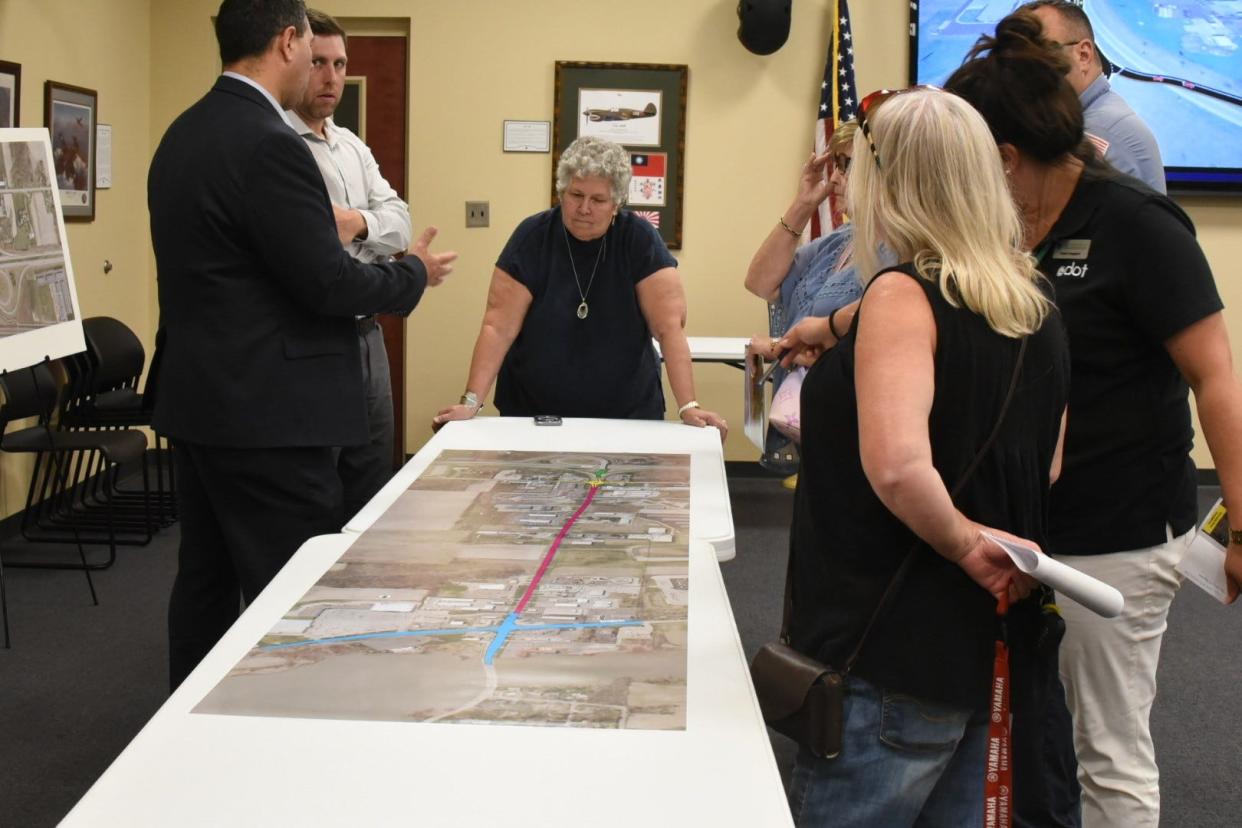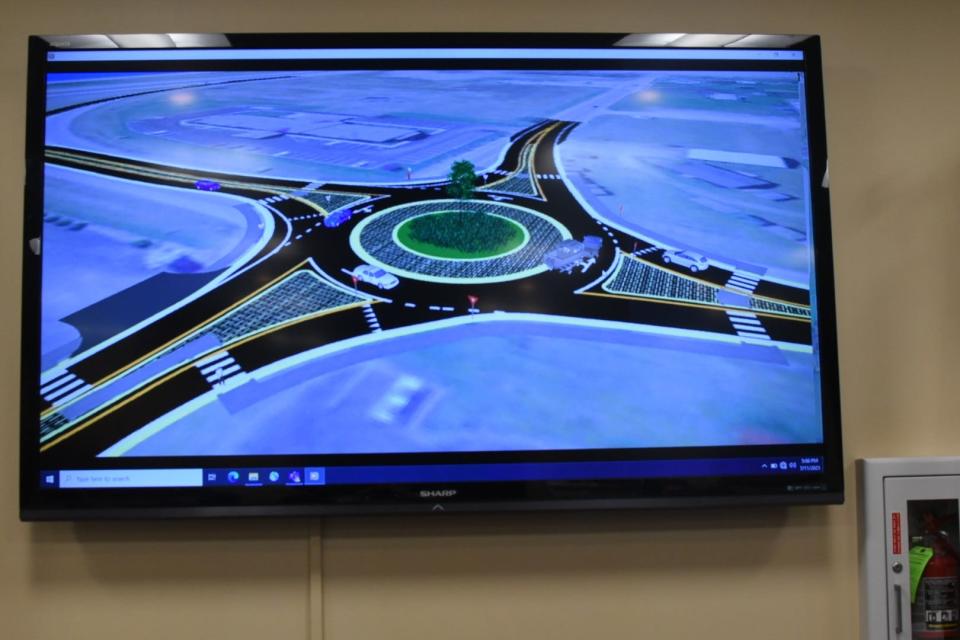ODOT holds session to hear concerns over Ohio 2/Ohio 53 roundabout plans

PORT CLINTON – It’s the new road project that everyone in the area is talking about: A duo of roundabouts and corridor improvements in one of the busiest intersections in Ottawa County to be constructed by the Ohio Department of Transportation over the next two years.
The intersection safety improvement project in Port Clinton will:
● Construct a roundabout at the westbound leg of Ohio 2/Ohio 53,
● Construct a roundabout at the Ohio 53 and State Road intersection,
● Widen Ohio 53 (S.E. Catawba Road) from the interchange to Ohio 163,
● Add a two-way turn lane throughout the corridor, add a sidewalk, and upgrade curb ramps.
Construction to begin this month and end in 2025
Residents and business owners got to see up close a timeline of the construction that will take place between Ohio 2 and 163 along Ohio 53, set to begin in late July and end in winter 2024-2025.
ODOT personnel were on hand July 11 to discuss the project with the public at Liberty Aviation Museum on State Road in Portage Township.
At a cost of a little over $11 million, ODOT said over the long term, roundabouts have cost savings compared to signalized intersections. Roundabouts do not have signal equipment to install and repair.

Savings are estimated at an average of $5,000 per year in electricity and maintenance costs. The service life of a roundabout is 25 years, versus 10 years for traffic signals.
ODOT personnel displayed a large map showing color-coded phases of the project, as well as videos showing how the project will look when completed.
First step is to widen Ohio 53
Work to widen Ohio 53 will begin in late July, the map’s key noted.
Business owners expressed concerns about access to their shops and the impact construction will have.
Sherri Roberts and Dr. Alice Randolph, who own “R Coffee Corner” as well as Randolph’s psychiatry practice in the Harbor Lights Landing shopping center on Ohio 53, were very concerned about how people would access their businesses during construction.
“I want to keep the doors open,” Randolph said. “But I don’t know how I’m going to keep going through October through March. I don’t know how.”
Randolph, Roberts and the Harbor Lights Landing owner Ed Urbanek voiced their concerns to ODOT team members and brainstormed ideas to keep customers coming into their coffee shop.
All three said they were frustrated and scared.
“Tourism is our lifeblood,” Roberts said. “We need the support from local people to get us through.”
Other area residents expressed curiosity about the project and came to see the timeline and maps for themselves.
“I understand it will be disruptive to begin with, but I think it will be an advantage,” Kathy Magyar of Catawba Island Township said.
“We love the one in Marblehead now,” Magyar added, referring to the roundabout in Danbury Township at Ohio 163 and North Shore Boulevard that opened last fall.
ODOT public information officer Kelsie Hoagland said she believed the project would go faster than people realized.
“ODOT understands the challenges of impacts during construction,” Hoagland said. “Our job is to create a safer corridor, that’s our responsibility.”
To see a detailed map of the upcoming changes visit transportation.ohio.gov and search for “SR 2/SR 53 Intersection Improvements.”
Key questions posed to ODOT at the session
How will semis, campers, and boat haulers get through the roundabout?
ODOT: When designing the roundabout, we took into account that large vehicles like campers, boat haulers, emergency services vehicles, tractor trailers, farm equipment, etc. have to be able to maneuver it. This was done by choosing the proper size for the roundabout that would be able to handle such traffic. One way this is achieved is by using truck aprons, which is an area that falls between the central island and the circulating lane. It is a mountable portion allowing trucks to drive over it when necessary, but not used by passenger vehicles.
Will a single lane roundabout be able to handle summer influx of traffic?
ODOT: When the safety study was completed for this intersection, traffic data was collected during July, knowing that this was when the average weekday volumes would be at their highest for the entire year. This data yielded that a single lane roundabout was sufficient for each approach to the intersection.
How will this reduce congestion?
ODOT: The proposed roundabout will reduce entering vehicle speeds to 15 to 25 mph, which only requires around a 50 to 100 foot gap in traffic for a vehicle to safely fit into traffic. Drivers entering the roundabout will slow down, look to the left, and yield to traffic in the intersection. If there is no traffic to the left, the driver continues through the roundabout. Roundabouts are designed to keep traffic flowing and reduce congestion. They also improve safety, reduce pollution, and complement the community.
This article originally appeared on Port Clinton News Herald: Concerns voiced at ODOT meeting over plans to build 2 roundabouts

